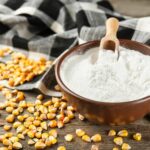For hundreds of years, corn has been undergoing the process of refining in order to separate it from its component parts. This process is broadly termed as corn refining and results into by-products of corn which have immense value and importance. Through the process of corn wet milling, corn is separated from its 4 main components which are:
- Corn starch
- Corn gluten
- Corn germ
- Corn fiber
If you wish to know more about the process of corn refining, you can go through the information that has been given as follows.
- Corn refining takes into use the yellow dent corn which weighs about 56 pounds. Out of this, 70% is the corn starch, 10% is the protein, 4 % is oil which is extracted from the germ and 2% is the fiber that comes from the hull.
- At first, the inspection and cleaning of the yellow dent corn takes place and this is followed by steeping. The bushels of corn are put into a stainless steel tank for about 40 hours of time at a temperature of 50 degrees. During this process, the kernels absorb the water and almost double in size. When this happens the gluten bonds loosen and the starch is thus released. The germ is removed from the other components by coarsely grinding the corn.
- From the slurry, the low-density corn germ is separated out using cyclone separators. It is these germs that constitute the major portion of the corn’s oil. The oil is extracted from the germ by a combination of solvent and mechanical processes. The oil thus obtained is first refined and then filtered to get final and finished oil.
- In the next step, the corn and the water slurry goes through a second round of grinding which results in separation of gluten and starch from the fiber content present in the corn kernel. The fiber which is obtained is first collected, then slurried and screened once again to get any starch that is left.
- Now the starch-gluten suspension which is also known as mill suspension is put into starch separators. Since the gluten has a lower density as compared to starch, it is easily spun out whereas the starch is washed, rediluted and washed again to obtain premium quality starch.
- After this, the starch is made to convert into liquid glucose or glucose syrup. This is done by treating it with enzymes. The resultant liquid glucose is used as a taste and texture enhancer in many syrups, sauces, and other foods.
This is how the main by-products of corn are obtained. Each one of them fulfills many benefits and uses and are further refined and then sold. HL Agro, the producer & exporter of bulk corn by-products seamlessly delivers unadulterated yield to the markets around the world. From wholesale corn starch to bulk corn fiber, you can buy any corn derivative from the company by simply contacting it online or over the phone.






